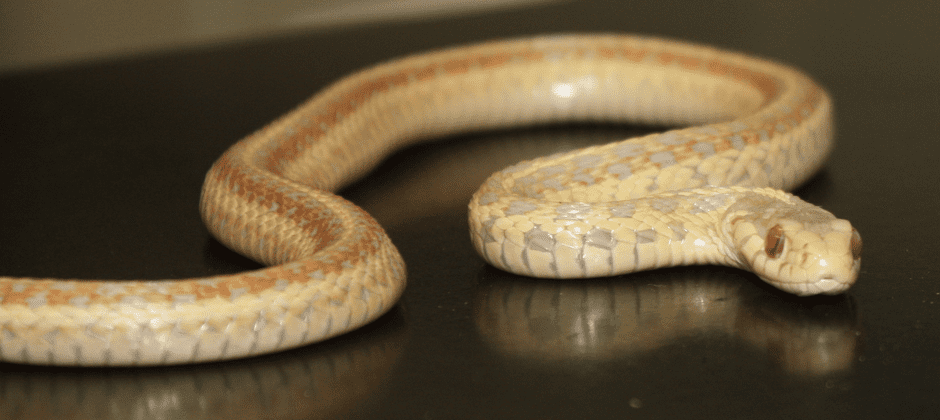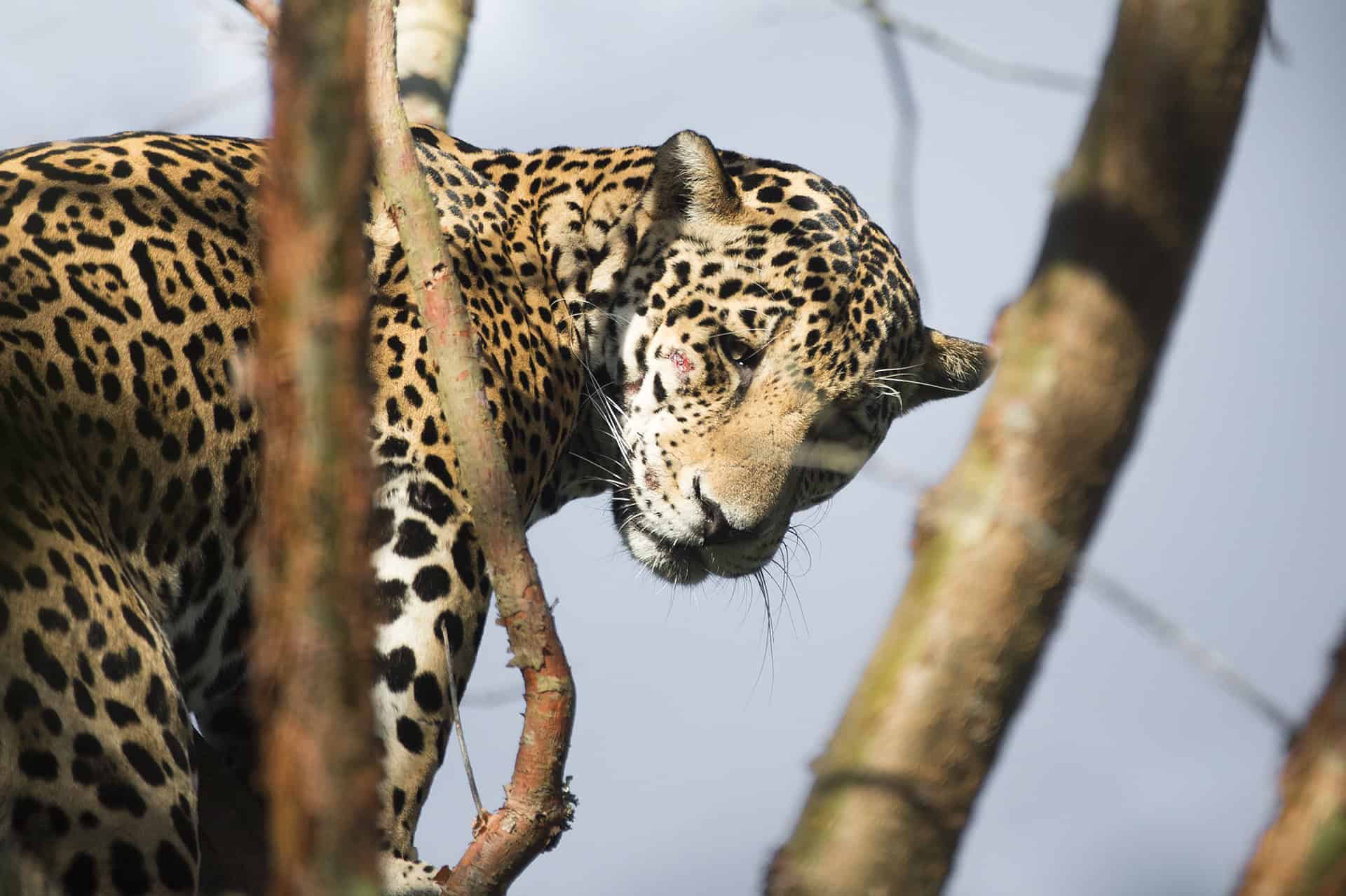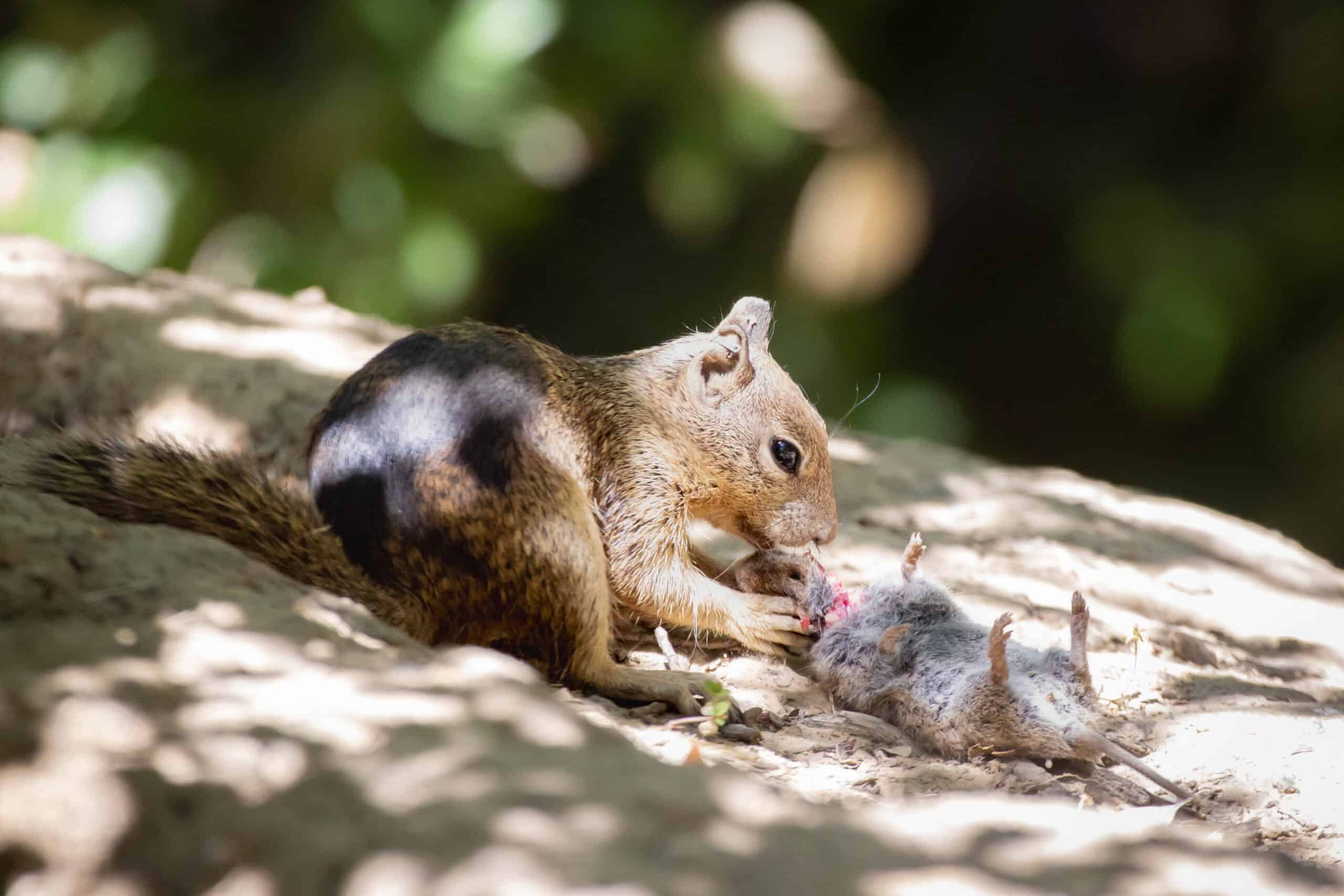Share this article
Do albino snakes face higher predation risk?
Researchers have often wondered whether albino prey may be more susceptible to predation—especially in cases where the prey relies on certain color patterns to camouflage better with their surroundings.
But new experiments show that albino garter snakes might not be the hottest items on the meal ticket for predatory birds.
“There is lots of evidence that birds exert strong selection on color patterns in snakes,” said Barry Stephenson, an associate professor of biology at Mercer University in Georgia and the first author of the study published recently in Zoology. But albinism may result in different enough patterns that it confuses predators.
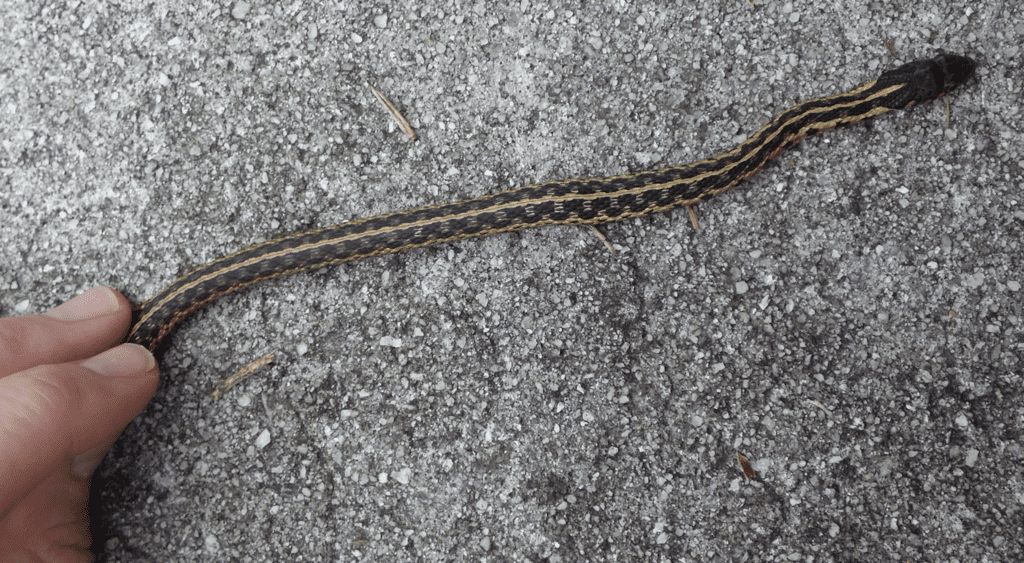
A wild garter snake without albinism. Credit: Barry Stephenson
Stephenson first become interested in the topic when a friend, Kevin Drace, saw an albino eastern garter snake (Thamnophis s. sirtalis) near his house in Georgia. Drace captured it after seeing it there again a few weeks later. Stephonson gathered some basic descriptive data on the snake.
Curious, Stephenson reviewed the literature on albinism and found very little on the effect of albinism on wild vertebrates other than records of a few albino animals in museum specimen collections. He realized it would be extremely difficult to observe any ecological impacts on albino wildlife.
“Albinism is usually so rare, with just a handful of insular populations that are small and inbred,” he said—other than a few subterranean cave populations where the phenotype evolved.
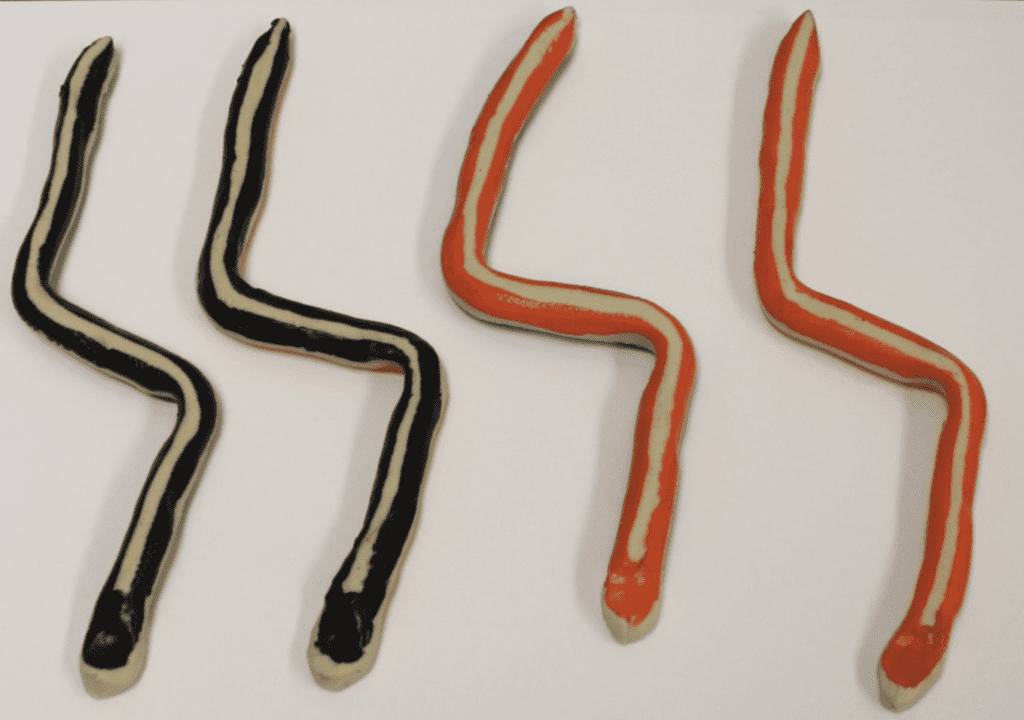
Models mimicking the different color treatments, with the non-albino on the left and different and albinos on the right. Credit: Barry Stephenson
As a solution, he and his colleagues created an experiment using clay albino snake models that they ran in Bond Swamp in central Georgia. During the first year of their experiment in 2015, they used 50 models each of non-albino eastern garter snakes, full albinos and two forms of partial albinos. They left these models out in the field for a period of time, then checked back to see which ones had been attacked—something they could tell based on the leftover beak-marks in the clay. In 2016, they tripled the number of models to 150 of each treatment type, a total of 600 models.
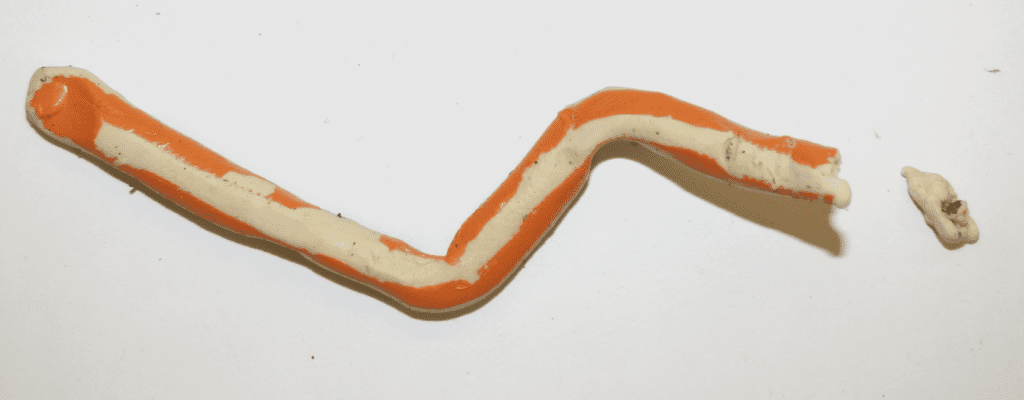
An albino model that was attacked at the tail by a bird. Researchers could tell the rough type of bird by looking at the beak marks on the clay models. Credit: Zeshan Velani
The researchers found no difference in attack numbers. “The albino models and [those with partial albinism] did not receive a higher frequency of attacks from birds than did the wild types,” Stephenson said.
This initially surprised the researchers, who assumed albinism would make the snakes an easy food choice by being more obvious to predators. They aren’t entirely sure why albinism doesn’t play a factor.
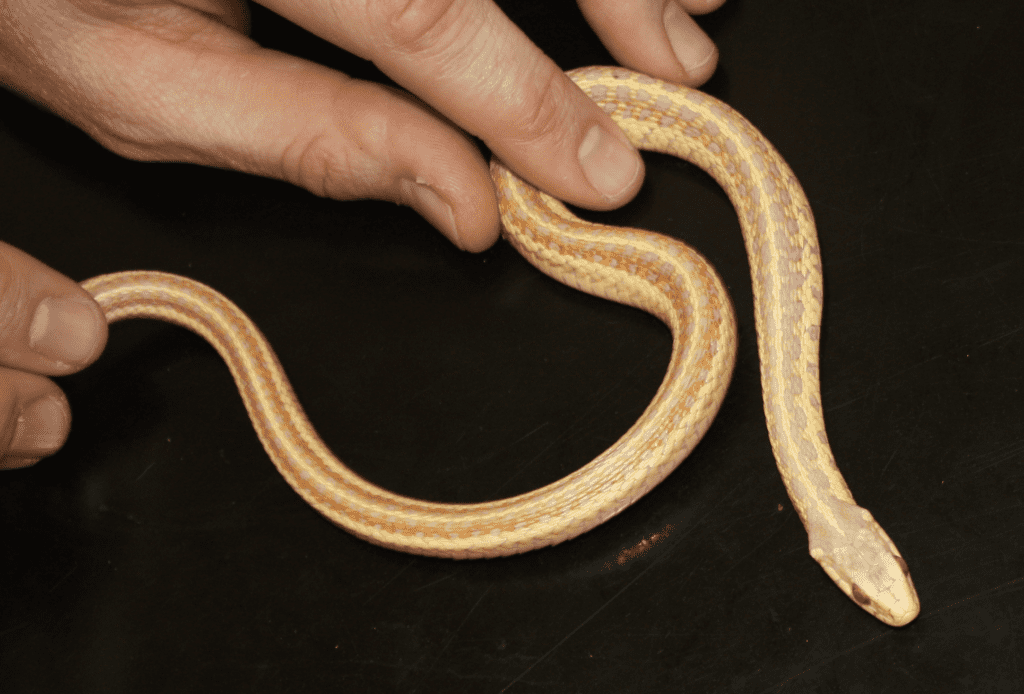
Albino garter snakes didn’t necessarily attract more attention from predators, despite not having the same kind of camouflage. Credit: Kevin Drace
The study shows the distinctive colors of albinos alone doesn’t make these snakes inherently more vulnerable to bird predation. But it still might make the snakes easier prey to other types of predators, Stephenson said.
Albinism also may come with other fitness costs. The red eyes that many fully albino snakes have may affect their vision and ability to hunt, for example.
Header Image: An albino eastern garter snake. Credit: Kevin Drace



